Stewart Lundy is a biodynamic farmer, researcher, and writer from the United States. In this interview with Charles Cross, he shares his thoughts on the evolving tradition of biodynamics, his development during preparation-making on his farm, and how other spiritual traditions influence his thinking about biodynamics.
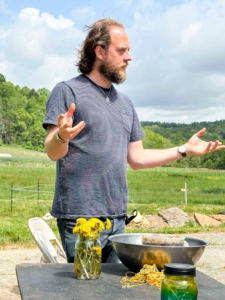
Stewart, can you give us an introduction to yourself and your work?
I started farming in 2010 when my partner and I created Perennial Roots Farm in Accomack, Virginia. We started with the idea of a homestead with permaculture and organic ideas and pretty quickly stumbled onto biodynamics. We didn’t put it into practice immediately—it took about two years, but that means it’s been 12 years now that I’ve been using biodynamics. We have cattle, sheep, hogs, rabbits, and a mixed garden—we do herbs, vegetables, a CSA, and markets. At the heart of it is that we want to grow good food for ourselves and, from the surplus, to be able to sell and share with others. We also make our own biodynamic preparations—we grow our own herbs and use sheaths from our animals. When that happens, I’ve noticed a qualitative change in the preparations. Biodynamic preparations are more at home with the farm when they are made on the farm.
In 2022, I started working with the Josephine Porter Institute (JPI), which has been around for over 30 years. It was founded in 1985 by Hugh Courtney after the death of his mentor, Josephine Porter, in 1984, who learned directly from Dr. Ehrenfried Pfeiffer. We make a majority of the biodynamic preparations sold in North America and ship internationally. My interest in biodynamics grew from learning under Hugh Courtney myself. I visited him almost every year for the last seven years of his life. I’m now helping improve preparation quality, ensuring qualitative assessment, running trials with our farm manager on-site, and pushing the presence of biodynamics online.
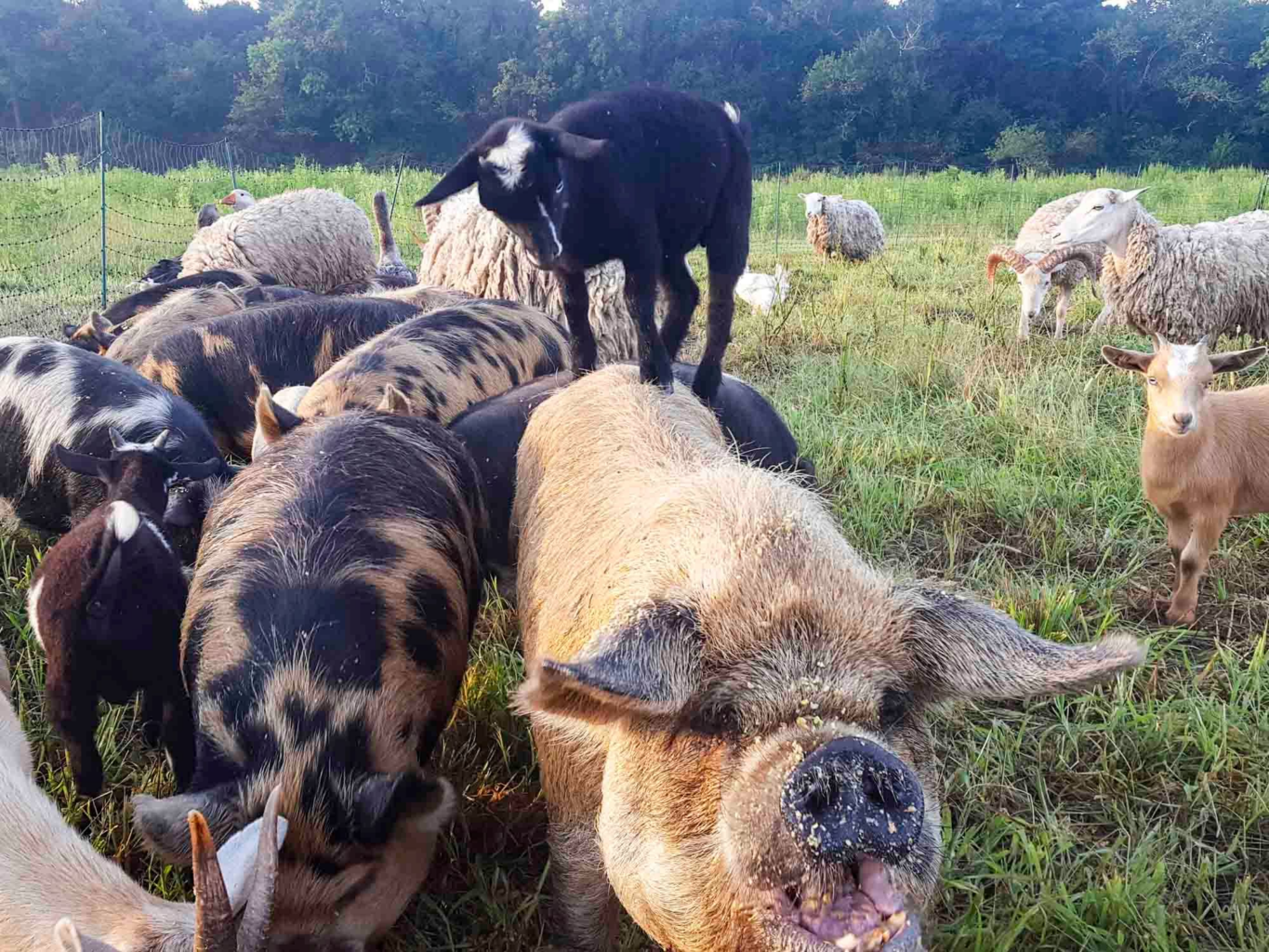
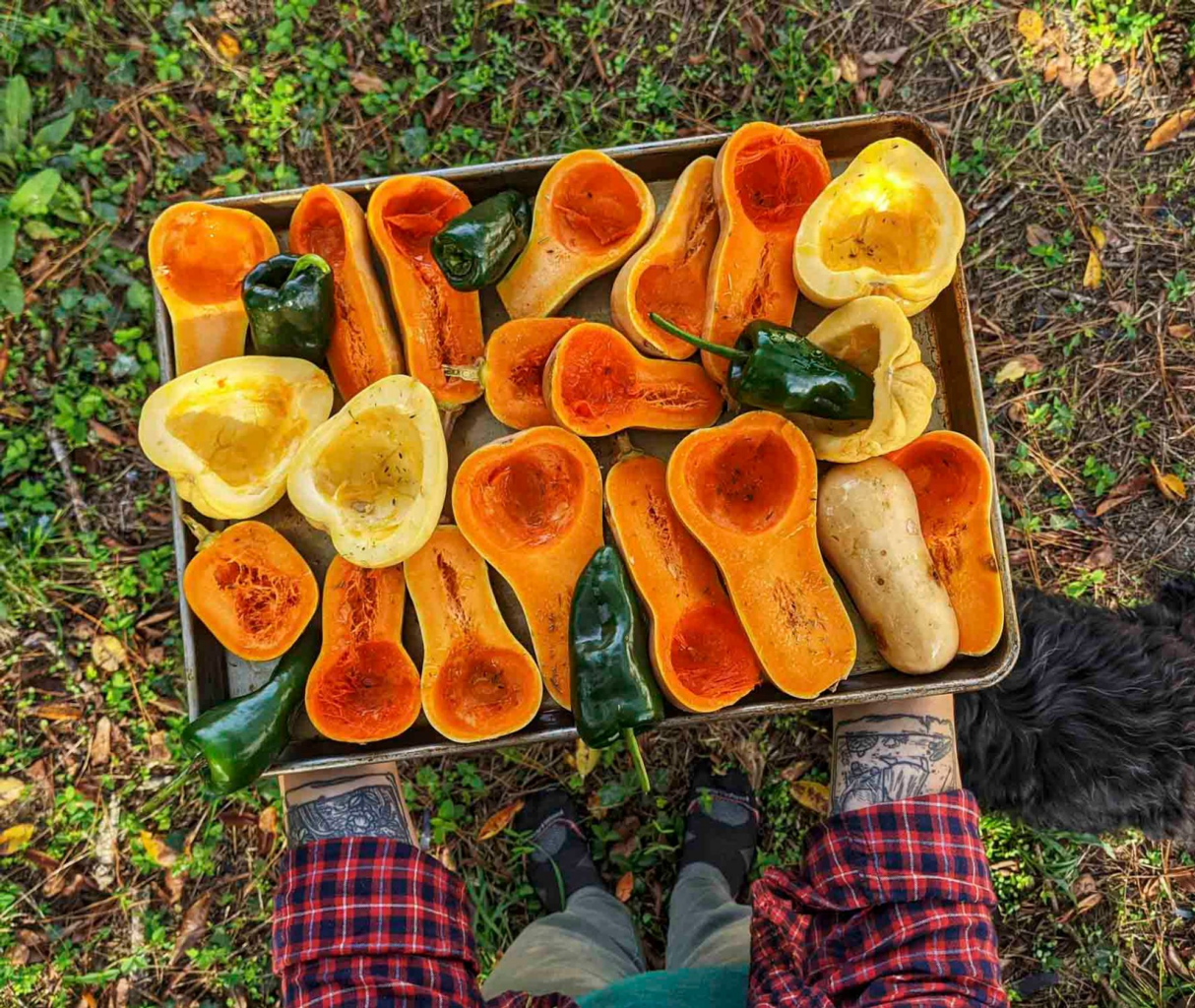
Left: Animals at the Perennial Roots Farm in Accomack. Photo: Natalie McGill
Right: Organic produce from the Perennial Roots Farm in Accomack. Photo: Stewart Lundy
I understand that JPI is also trying to advance the craft of preparation-making. Quality is a part of that. Are there new preparations or new ways of working with preparations?
We hold the proprietary rights to the Pfeiffer Field and Garden Spray, which is similar to the Pfeiffer Compost Starter. Going through hundreds of pages of Ehrenfried Pfeiffer’s notes, I found references to ingredients that he said he could not find at the time, but if anyone did, they needed to be added to this recipe. Since his passing, we’ve been able to incorporate elements that he saw as necessary but he could not, of his own research, identify. So we are developing the work, not in a new direction, but along the lines he wanted it to go. It’s about finding better ways to do what the recipe already says. It’s about finessing the preparations, having the highest quality sheath, the freshest herbs, and burying them on the same site, in the best spot. You can take all of biodynamics up a notch just by ensuring the quality of the ingredients that go into it.

Are there any anecdotes or images that could bring us into your farm and how you practice preparation-making as a craft?
I once had a strong feeling that the sheaths are not necessarily the right side out. I undertook an experiment to turn the chamomile preparation into a sausage with the lining inside out so that the digestive part is on the outside and the herb is on the inside. I found that there’s a fatty layer that’s often on the intestines that can now meet with the herb—the aromatic oil part of the plant can comingle with the aromatic, oily part of the animal. I found that the fatty quality, which is the vitality of the animal stored up from the plant world, merges with the herb, and you end up with something that’s even more clay-like. And it’s sweet—it almost turns into something like molasses.
Then, to my delight, I was going through Pfeiffer’s notes at JPI, and I found an explicit reference where he says that, when he’s making the intestines, he turns them inside out, inflates them, and hangs them to dry, because that’s how you make sausage. After all, Steiner said to “make them into another kind of sausage.”1 And he’s saying this to people who live on rural estates—they would have known how to make a sausage and would likely have started with what they knew.
I could also mention that I hang my preparations where they only receive light in the morning—the light of the dawn, the new day. By midday, they’re shaded because I only want to invite the new life of the future. I don’t want them getting desiccated and burnt by the afternoon sun. You would similarly grow lettuce somewhere where it gets morning sun but doesn’t get scorched. And I find that by doing that, my hanging preparations never fully dry out. The whole process stays alive. I’d never seen the chamomile preparation turn out this well.
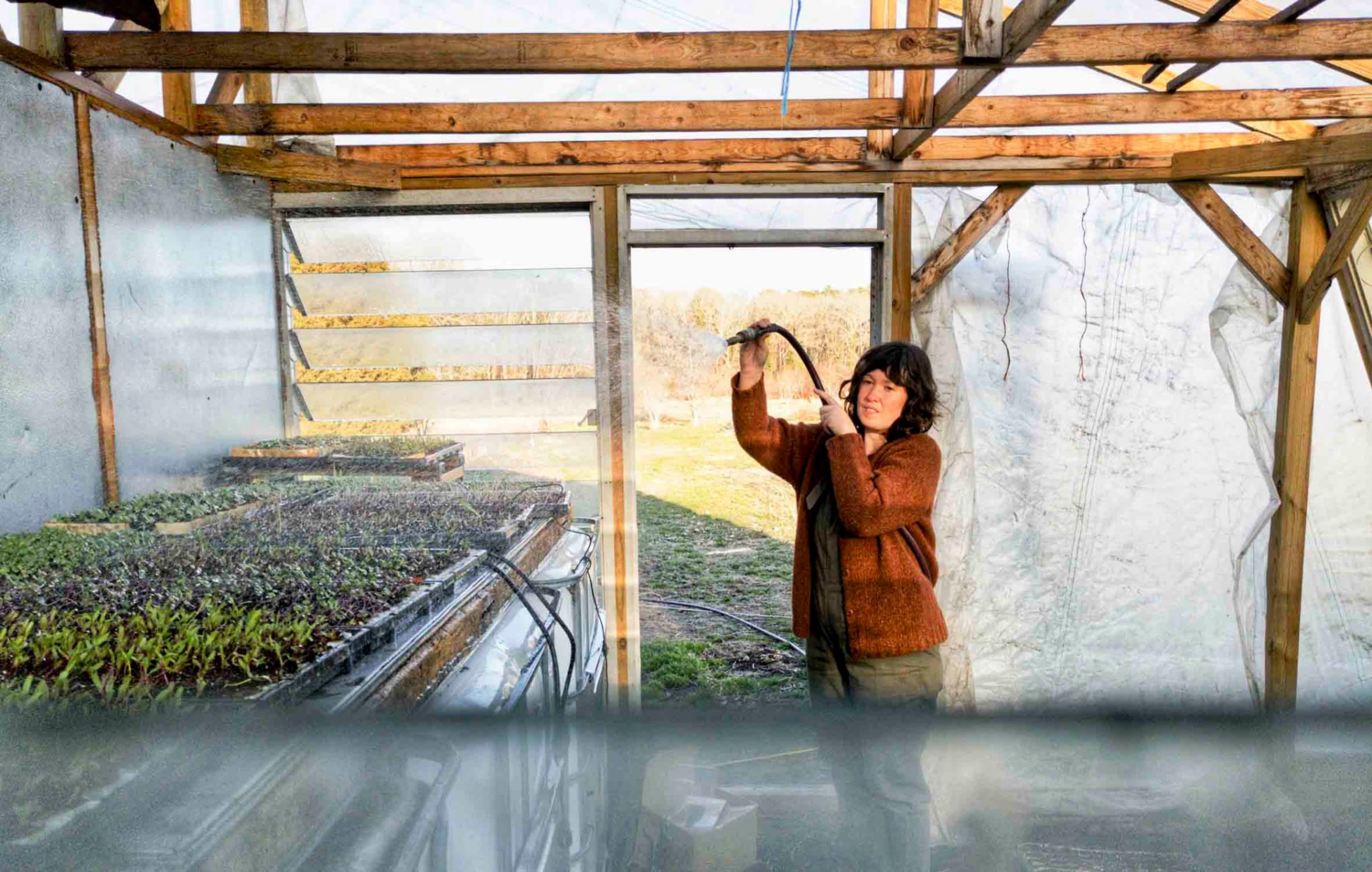

Left: Photo: Stewart Lundy
Right: Fields at the Perennial Roots Farm in Accomack. Photo: Natalie McGill
You seem well-versed in a broad array of spiritual traditions. Can you give an example of how those different traditions have influenced the way you think about biodynamics?
Ultimately, I think if any spiritual path has access to wisdom or truth in a human way, it will already overlap with anthroposophy. To me, Steiner seems to suggest that the Buddhist Eightfold Path is fundamental to the Christian path.2 Although he didn’t quite put it this way, I would say you need to be a decent Buddhist before becoming a decent Christian, which means the Eightfold Path is the soil out of which the Christian impulse blossoms. They’re not totally separate things. So I’ve taken that cue, and I incorporate into my personal spiritual practice things like Paramahansa Yogananda’s Kriya Yoga techniques and meditative practices, which is kind of very gentle, subtle Kundalini rising and sublimation. It’s not a sexual quality, but it redirects the attention from the outer world to the heavens, to the head.
I’ve realized that we do the same thing when making preparations. We take the aromatic, reproductive side of a plant—all these fragrant flowers—we settle them down, contain them, and then introduce them to the “head” of the plant, which is the root, resulting in a new vigor and vitality. That’s the same process as what Kundalini Yoga aspires to do, but in the garden. And you can almost say it gives the root of the plant a halo—it glows. You could think of an essential oil diffuser—the oils only go up, out, and away. They do not, by nature, go down and inward. Biodynamics takes those aromatic elements that would escape and return to the cosmos and brings them down to the root, which then drives that upward cosmic stream. It’s almost an accelerant—or a kind of lighter fluid to the life of the soil that sets the flame ablaze.


Left: Moistening chamomile and stuffing “sausages” to make the biodynamic chamomile preparation. Photo: Natalie McGill
Right: Cow horns being prepared to be buried. Photo: Natalie McGill
That’s a beautiful image. How has your life as a farmer influenced your spirituality, specifically your sense of morality: good and evil?
In biodynamics, we see that when a plant has a disease, it’s not the plant’s fault. Steiner says that plants don’t get diseases in the proper sense that an animal or human can because they don’t have an internalized astral body. I think of the astral body as a kind of internal climate—it can be sunny, it can be stormy, or it can be rainy. But for the plant that’s on the outside, it’s actually the weather. When a plant gets sick or shows parasitic pests on it, like aphids or fungus, it’s not the plant’s fault. The plant was doing absolutely the best it could in that situation. It’s the context that’s disordered. You can’t blame the plant for growing in that context or that the farmer tended it improperly. Now, how does this relate to evil? I see most of our negative bad habits as something just like this. Even if someone is truly overwhelmed by something, I see it as something external weighing them down, like they are growing in conditions that aren’t auspicious. This helps me see the good in each person and who they are—each person is like a plant doing its best.
There’s a local farmer who grows potatoes, and he was talking about how he could sweeten the potato, making it photosynthesize better. As a result, he didn’t have any pests because, he said, pests like sour plants—they don’t like sweet plants. I saw an immediate analogy for the soul, for the human spiritual organism: if I’m sour inside, all sorts of parasitic habits can appear. But if we can lighten what is in us and sweeten our souls, those parasitic entities find us distasteful. And that is part of this process of spiritual renewal. It’s really that we photosynthesize the spiritual world, and we become inwardly sweeter. My plants don’t really have pest problems if I give them the right conditions. But we need to improve our own inner atmospheres for ourselves, which requires disciplined practice. The image of the plant has shifted my sense of evil. As a result, I don’t spray pesticides or herbicides, nor do I seek to eradicate pathogenic processes I see in other people. Instead, I focus on how I can make each plant more receptive to the light.

In conclusion, could you reflect on the past 100 years of biodynamics and look at where you see the movement’s future evolving?
Rudolf Steiner hoped that biodynamics could be implemented on as much land as possible, but it became somewhat insular for reasons beyond his control after his passing. However, biodynamics became part of the first organic certification in the United States. It helped pioneer a lot of these ideas of “life-lawful” farming and moved the entire center of gravity of agriculture toward what we would call regenerative today. In one sense, biodynamics has succeeded in a diffuse and subtle way. It has, almost like a veil painting, changed the tone of agriculture, not because it has dominated it or won the most acres in terms of production, but because, by being happy with being the weirdest outlier in agriculture and holding that space, it’s allowed a lot of other people to creep closer to that. We end up with permaculture as a movement, and we have regenerative organic agriculture, and it’s hard to look at those developments and say that the fingerprints of biodynamics aren’t there. Biodynamics hasn’t been extremely popular in a worldly sense, but that has allowed it to remain true to its principles and focus on the preparations and this slow growth. And it’s not just boxed into bureaucratic walls or forms; it has a life of its own. The quantity of certifications can’t be the sole measure of success for biodynamics because there are a lot of farms, vineyards, and gardeners who use biodynamic principles and preparations and employ the calendar but aren’t necessarily certified.
What do I see for the future of biodynamics? I think we should keep being the weirdos and not dumb it down because people are actually at a point where I think they’re hungry for the spiritual world. I think the whole purpose of the Kali Yuga, this dark night of our collective soul, was to dim our senses to the spiritual world so that we become more receptive to that light. It’s meant to awaken the hunger for the spiritual world. So I think it has served a very important purpose. It’s given us a scientific method. But if we were to dumb it down or make it too accessible in the sense of doing away with all the weird terminology or the (seemingly) otherworldly concepts, it’ll stop being what it is.
I think people are ready for the idea of renewing the spiritual foundations of agriculture. If we start to water biodynamics down, we actually lose people because then it sounds like organic, permaculture, or regenerative agriculture. And while all of those certainly are our allies, I think we need to maintain the fact that we’re talking not just about productivity or symbiosis in an ecosystem. We’re talking about the ecology of the physical, etheric, astral, and spiritual worlds. So, I see the path forward for biodynamics as a renewed commitment to its foundations. And I think the world will rush to it, especially with a tool like the internet. Now, people can find anything they’re interested in and plug into it. I think the future is where we have the opportunity to speak about biodynamics out of anthroposophy without having to hem and haw about it because an open audience will find us. And I think they already are—JPI’s Substack is growing. Every time I post, there are new subscribers. And that’s been that’s been rewarding because it shows that the hunger is there.
More at Josephine Porter Insitute and Stewart Lundy’s Substack.
Title image Hanging the stuffed chamomile “sausages” in the air over spring and summer. Photo: Natalie McGill
Footnotes
- “Instead of using these intestinal tubes as they are commonly used for making sausages, make them into another kind of sausage — fill them with the stuffing which you thus prepare from the camomile flower.” CW 327, The Agriculture Course, Lecture 5, June 13, 1924.
- The author’s conclusion from the following quote: “In the lectures on St. Luke’s Gospel I spoke of the ‘Eight-fold Path’ which men can tread if they adhere to what flowed into the evolution of humanity through Gautama Buddha. This Eightfold Path is usually said to consist of the following: right view, right understanding, right speech, right action, right vocation, right application, right memory or recollectedness, right contemplation. These are attributes of the life of soul. It can be said that since the time of Gautama Buddha, human nature has reached a stage where it is possible for man gradually to unfold in himself, as intrinsic faculties of his own, the attributes of this Eightfold Path.” in CW 123 The Gospel of St. Matthew, Lecture 7, September 7th, 1910.

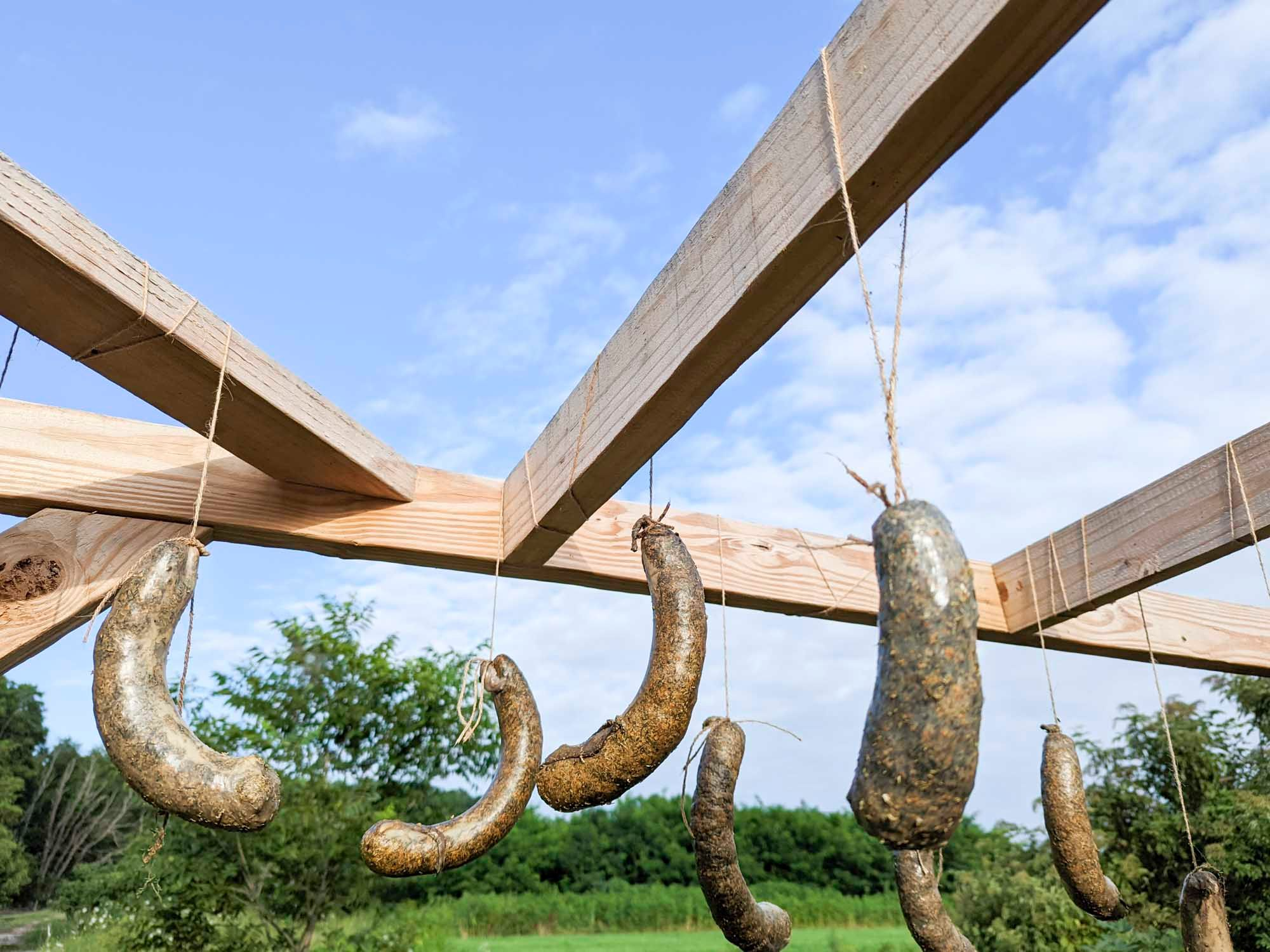







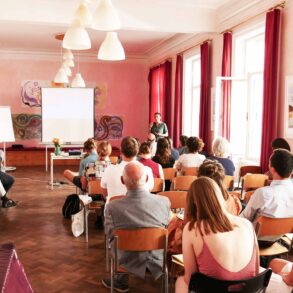






I love this because it speaks of how I feel and see what is unfolding. I gave a talk at a permaculture convergence in the UK last year and it was full only two people knew about Biodynamics the rest were new and most were young people. After my talk an introduction to the planting calendar I got so many enthusiastic comments and people wanting to know more. I feel people are reconnecting or awakening to what they have known a soul remembering. Very exciting times I feel for the coming years regarding biodynamics.